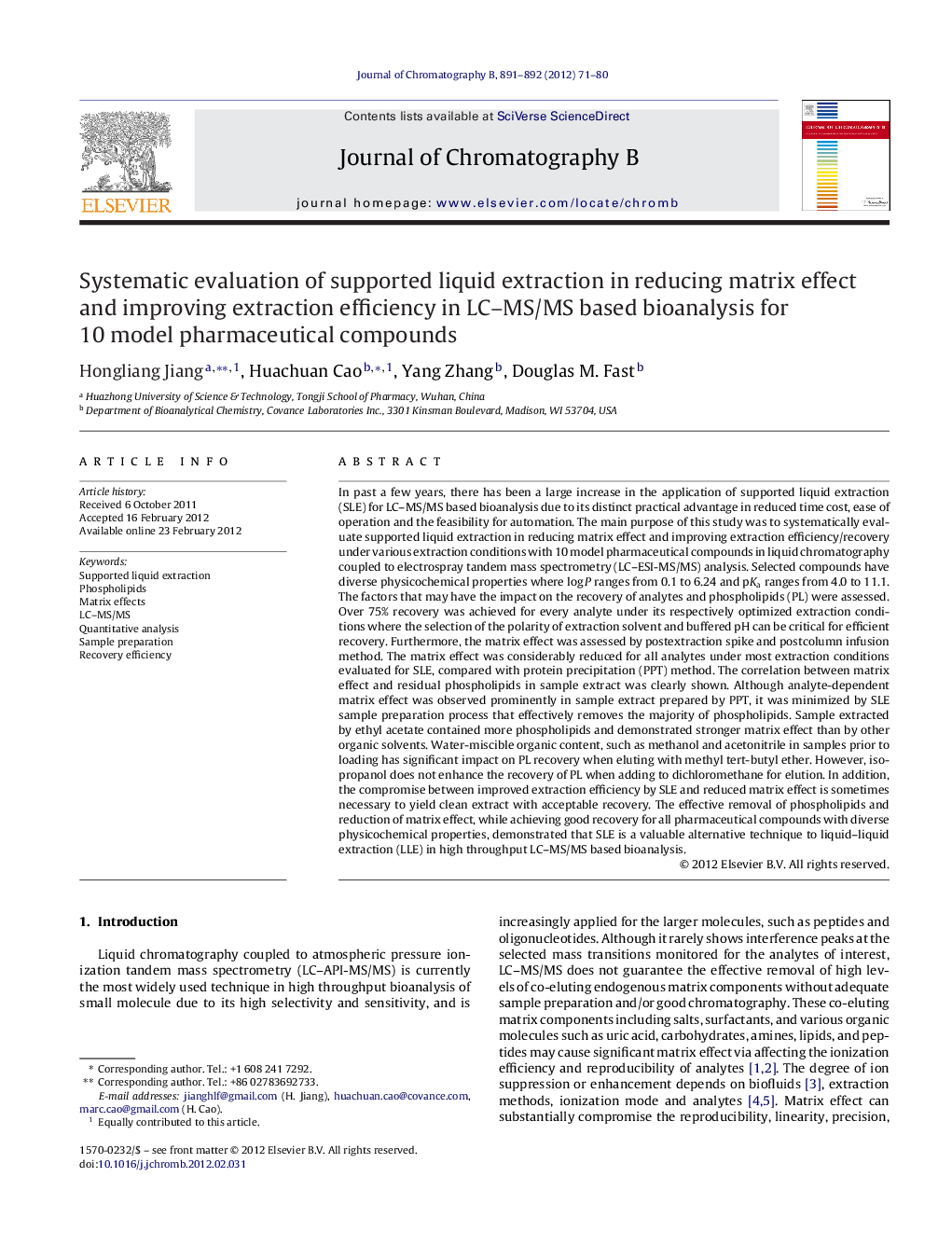| کد مقاله | کد نشریه | سال انتشار | مقاله انگلیسی | نسخه تمام متن |
|---|---|---|---|---|
| 1213478 | 1494136 | 2012 | 10 صفحه PDF | دانلود رایگان |

In past a few years, there has been a large increase in the application of supported liquid extraction (SLE) for LC–MS/MS based bioanalysis due to its distinct practical advantage in reduced time cost, ease of operation and the feasibility for automation. The main purpose of this study was to systematically evaluate supported liquid extraction in reducing matrix effect and improving extraction efficiency/recovery under various extraction conditions with 10 model pharmaceutical compounds in liquid chromatography coupled to electrospray tandem mass spectrometry (LC–ESI-MS/MS) analysis. Selected compounds have diverse physicochemical properties where log P ranges from 0.1 to 6.24 and pKa ranges from 4.0 to 11.1. The factors that may have the impact on the recovery of analytes and phospholipids (PL) were assessed. Over 75% recovery was achieved for every analyte under its respectively optimized extraction conditions where the selection of the polarity of extraction solvent and buffered pH can be critical for efficient recovery. Furthermore, the matrix effect was assessed by postextraction spike and postcolumn infusion method. The matrix effect was considerably reduced for all analytes under most extraction conditions evaluated for SLE, compared with protein precipitation (PPT) method. The correlation between matrix effect and residual phospholipids in sample extract was clearly shown. Although analyte-dependent matrix effect was observed prominently in sample extract prepared by PPT, it was minimized by SLE sample preparation process that effectively removes the majority of phospholipids. Sample extracted by ethyl acetate contained more phospholipids and demonstrated stronger matrix effect than by other organic solvents. Water-miscible organic content, such as methanol and acetonitrile in samples prior to loading has significant impact on PL recovery when eluting with methyl tert-butyl ether. However, isopropanol does not enhance the recovery of PL when adding to dichloromethane for elution. In addition, the compromise between improved extraction efficiency by SLE and reduced matrix effect is sometimes necessary to yield clean extract with acceptable recovery. The effective removal of phospholipids and reduction of matrix effect, while achieving good recovery for all pharmaceutical compounds with diverse physicochemical properties, demonstrated that SLE is a valuable alternative technique to liquid–liquid extraction (LLE) in high throughput LC–MS/MS based bioanalysis.
► We evaluated matrix effect and recovery by supported liquid extraction.
► Over 75% recovery was achieved and the matrix effect was considerably reduced.
► Methyl tert-butyl ether and DCM eluted less phospholipids than ethylacetate.
► ACN and methanol in loading matrix increased the phospholipids’ recovery.
► Major suppression zones overlap the elution of phospholipids.
Journal: Journal of Chromatography B - Volumes 891–892, 1 April 2012, Pages 71–80